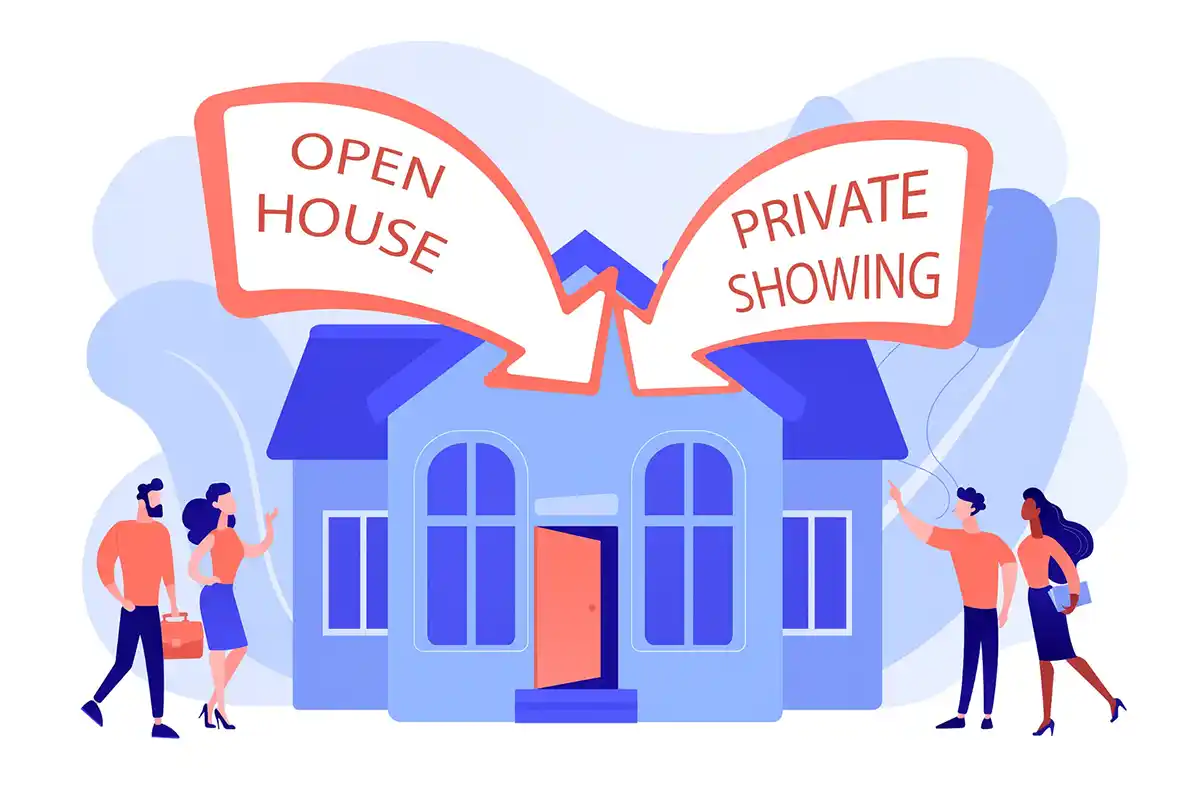When selling a home, two viewing methods dominate: open houses and private showings.
You’ve probably heard that open houses build excitement and private showings close the deal.
That’s partly true — but there’s more to the story.
This guide covers everything you’ve likely seen in Google search results about the topic, then adds proven research so you can decide which approach works best for your property.
| Feature | Open Houses | Private Showings |
|---|---|---|
| Definition | Public, timed event where anyone can view the home | Scheduled, one-on-one viewing for pre-qualified buyers |
| Pros |
- Broad exposure & perceived “buzz” - No appointment needed - Can create a sense of competition among visitors - Generates future client leads for the agent (more a benefit to the agent than the seller) |
- More focused attention on serious buyers - Higher offer conversion rate - Safer & more private |
| Cons |
- Many unqualified or “just curious” visitors - Privacy and security risks - Requires seller to vacate and prep extensively |
- Scheduling required - Less spontaneous - Seller must vacate during showing |
| Best Use Case | Launching a listing to create local buzz and visibility | Moving qualified buyers toward an offer decision |
Open Houses
What They Are
A public event, often on a weekend afternoon, where anyone can walk in and tour the property without an appointment.
Why They’re Popular
- Increased Exposure: Multiple visitors at once create a sense of activity.
- Convenience: No scheduling required for attendees.
- Creates Buzz: A busy open house can give the impression of high interest.
What the Research Shows
- Direct sale conversions are rare — only 4% of home buyers purchase a property they first saw at an open house (NAR).
- These events often attract unqualified or casually curious visitors.
- They are more effective for generating future client leads for the agent than for directly selling the featured home (Texas Real Estate Research Center; Oct 1998).
- Privacy and security risks are real, including theft of valuables (Investopedia).
Pros
- Creates visibility and neighbourhood chatter
- Drop-in access for visitors
- Can create a sense of competition
- Generates potential client leads for the agent
Cons
- Low direct sale impact
- Many attendees are not serious buyers
- Security and privacy risks
- Requires seller to vacate and prepare extensively
Private Showings
What They Are
One-on-one tours arranged in advance, typically for pre-qualified buyers, coordinated through platforms like BrokerBay, ShowingTime, or Touchbase.
Why They’re Popular
- Focused Attention: Buyers get a personalised walkthrough.
- In-Depth Evaluation: Attendees can inspect details without distractions.
- Serious Buyer Appeal: Those booking showings are generally further along in their decision-making.
What the Research Shows
- Private showings have higher offer conversion rates than open houses.
- They provide a safer, more controlled environment for the seller.
- Agents can tailor the showing to each buyer’s needs, increasing engagement and the likelihood of an offer.
Pros
- More likely to lead to offers
- Safer and more private
- Allows tailored presentations to match buyer priorities
Cons
- Requires scheduling and seller flexibility
- Less spontaneous than open houses
- Sellers must still vacate during viewings
Putting It Together
Some sellers and agents combine both strategies:
- Open houses at launch for awareness and optics
- Private showings throughout the listing period to convert serious interest into offers
The key is recognizing that while open houses can help with visibility, most successful transactions result from private, targeted showings. Use open houses strategically, but rely on private showings to seal the deal.



